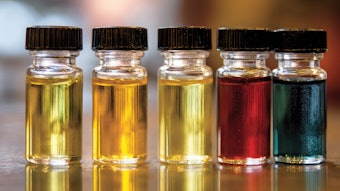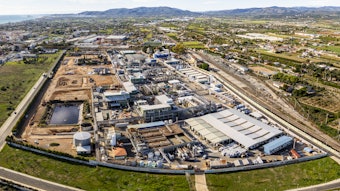Kokkini et al. (2004) examined the main oxygenated components of oils of M. pulegium produced from plants (38 populations) collected from three different climatic zones in Greece. The results of this study are shown in T-1. As can be seen from these results, some of the oils were rich in piperitone, menthone, isomenthone and piperitenone, and isopiperitenone to a lesser extent.
The oils of 14 Tunisian natural populations of M. pulegium were characterized by Ben Fadhel et al. (2006). They found that the oils could be grouped into three chemotypes:
Chemotype 1: (pulegone-type). The most commonly encountered chemotype; oils rich in pulegone with varying proportions of menthone and isomenthone.
Chemotype 2: (pulegone-menthol- type). Oils containing a high proportion of menthol and different amounts of pulgone.
Chemotype 3: (carvone/pulegonetype). This type is rare.










